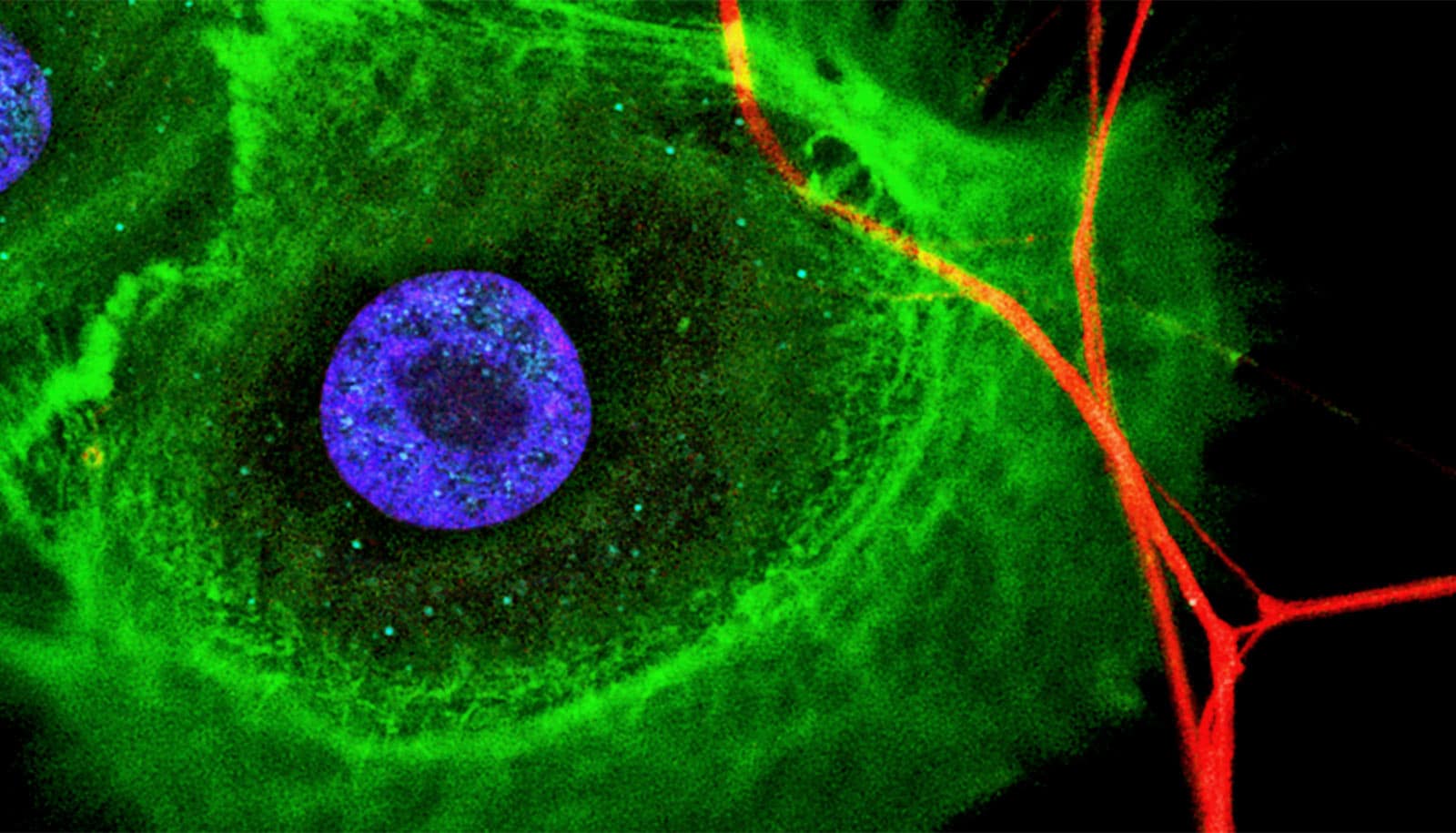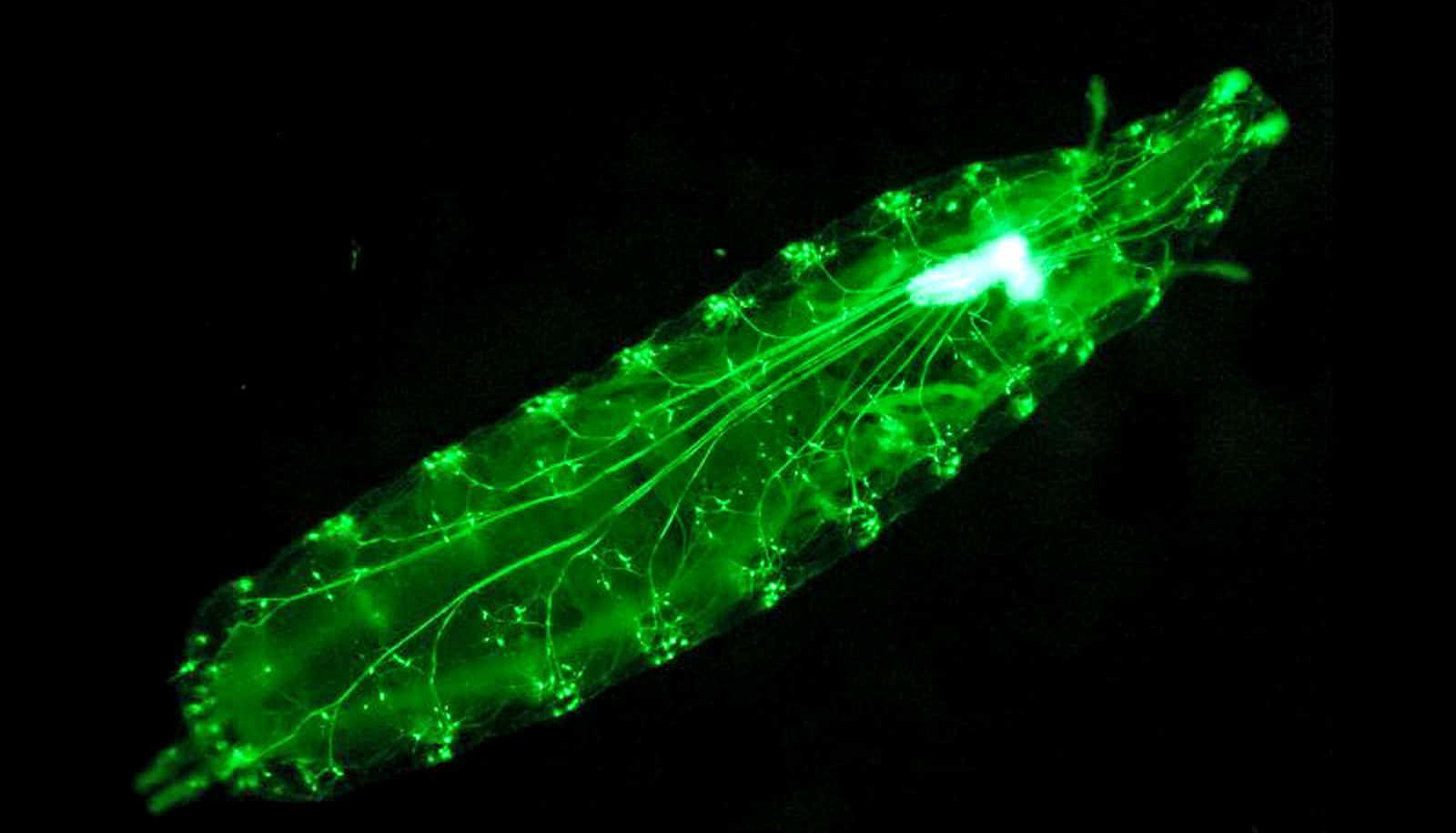Different stem cell populations connect to nerves in distinct ways, new research shows.
Innervation may therefore be crucial for proper tissue regeneration, researchers report.
In their new work, the researchers also demonstrate that cancer stem cells likewise establish contacts with nerves. Targeting tumor innervation could therefore lead to new cancer therapies.
Stem cells can generate a variety of specific tissues and are increasingly used for clinical applications such as the replacement of bone or cartilage. However, stem cells are also present in cancerous tissues and are involved in cancer progression and metastasis.
“It appears that nerves are fundamental for the survival and function of cancer stem cells.”
Nerves are fundamental for regulating the physiological and regenerative processes involving stem cells. However, little is known about the interactions between stem cells and neurons in regenerating tissues and in cancers.
The researchers have published two new studies that shed light on how stem cells promote neuronal growth in tissue regeneration and in cancer progression.
The first study compares the interaction of neurons with two different human stem cell populations, namely dental pulp stem cells and bone marrow stem cells. Both can differentiate into various cell types such as bone, cartilage, and fat cells. Human bone marrow stem cells are isolated from skeletal bones and are the gold standard for bone regenerative approaches. Extracted teeth are the source of dental pulp stem cells, which represent a promising alternative.
Using the “organ-on-a-chip” technology, which relies on small three-dimensional devices mimicking the basic functions of human organs and tissues, the researchers demonstrated that both types of stem cells promoted neuronal growth. The dental pulp stem cells, however, yielded better results compared to bone marrow stem cells: They induced more elongated neurons, formed dense neuronal networks, and established close contacts with nerves.
“Dental stem cells produce specific molecules that are fundamental for the growth and attraction of neurons. Therefore, stem cells are abundantly innervated,” says Thimios Mitsiadis, professor at the Institute of Oral Biology of the University of Zurich and research leader. The formation of these extended networks and the establishment of numerous contacts suggest that dental stem cells create functional connections with nerves of the face.
“Therefore, these cells could represent an attractive choice for the regeneration of functional, properly innervated facial tissues,” adds coauthor and junior group leader Pierfrancesco Pagella.
In the second study, the researchers examined the interaction between nerves and cancer stem cells found in ameloblastoma, an aggressive tumor of the mouth. They first demonstrated that ameloblastomas have stem cell properties and are innervated by facial neurons. When ameloblastoma cells were isolated and placed in the “organ-on-a-chip” devices, they retained not only their stem cell properties but also attracted nerves and established contact with them.
“It appears that nerves are fundamental for the survival and function of cancer stem cells,” explains Pagella.
“These results create new possibilities for cancer treatment using drugs that modify the communication between neurons and cancer stem cells. We hope this opens unforeseen paths towards effective therapies against cancer,” adds Mitsiadis.
“The combination of advanced molecular and imaging tools and ‘organ-on-a-chip’ technology offers an exciting opportunity to reveal the hidden functions of neurons and their interactions with various stem cell types, in both healthy and pathological conditions.”
The first study appears in FASEB J. The second study appears in Cells.
Source: University of Zurich


